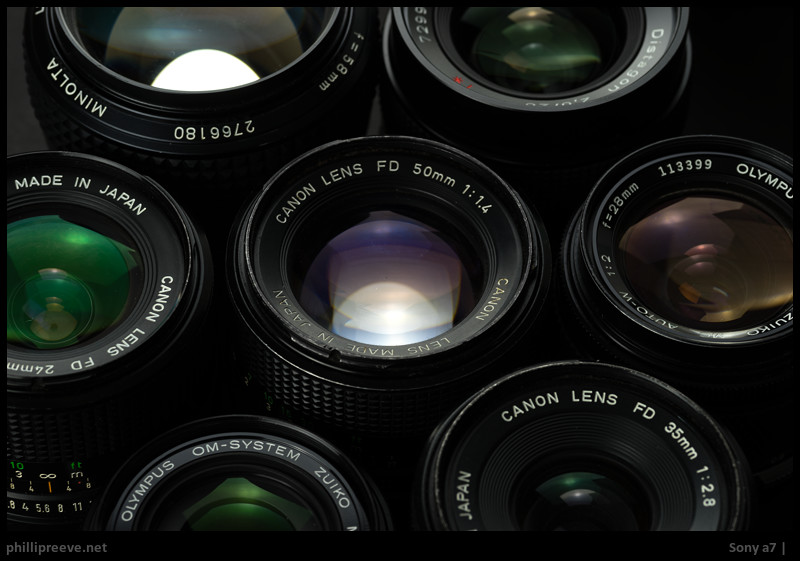
You can easily spend a fortune on lenses for your Sony E-mount camera but you don’t have to. These lenses all cost less than $499 and give you great image quality on your a7/a7II/a7III/a7rII-series camera.
For each lens we have summarized the defining strengths and weaknesses. We hope this will make it easier to decide for yourself, if the lens could fit your needs. Please make sure to check out our in-depth reviews for a much more detailed discussion of each lens.
There are certainly other lenses which would deserve a spot in this list but we only include lenses we have used ourselves, so please don’t take it personal if we haven’t included your favorite lens.
Last Update: November 2019
If you purchase the lens through one of the affiliate-links in this article we get a small compensation with no additional cost to you
Contents
- Voigtlander 5.6/12 M39
- Samyang 2.8/14
- Tokina Firin 2/20
- Canon new FD 20mm 1:2.8
- Samyang AF 2.8/24
- Canon new FD 24mm 1:2.8
- 7Artisans 1.4/28 FE+
- Sony FE 2/28
- Voigtländer Ultron 2.0/28
- Pentax K 3.5/28
- Canon FD 35mm 1:2 (convex)
- Canon TS 2.8/35
- Minolta MD Rokkor 35mm 1:2.8
- 7Artisans 1.1/50
- Sony FE 1.8/50
- Sony FE 2.8/50 Macro
- Olympus OM 3.5/50 Macro
- Minolta MD Rokkor 35-70mm 1:3.5
- Zeiss C/Y 3.4/35-70
- Canon nFD 1.4/50
- Zeiss C/Y 1.4/50
- Minolta MD 2/50
- Minolta MC Rokkor 55mm 1:1.7
- Canon FD 1.2/55
- Olympus OM Zuiko 50mm 1.2/50
- Minolta MC 1.2/58
- Voigtländer Color-Heliar 2.5/75
- Sony FE 1.8/85
- Samyang 1.4/85
- Jupiter-9 2.0/85
- Tokina AT-X 2.5/90 Macro
- Canon nFD 2/100
- Minolta MD 2.5/100
- Zeiss Sonnar T* 3.5/100 (C/Y)
- Minolta MD 4/75-150
- Olympus OM 2.8/100
- Samyang 2/135
- Canon nFD 2/135
- Canon new FD 2.8/135
- Canon new FD 3.5/135
- Nikon Ai-s 180mm 2.8 ED
- Canon EF 4/70-200 L
- Minolta MC 4/200
- Canon FD 4/300 L
- Phillip’s favorite kit of <$499 lenses
- Bastian’s favorite kit of <$499 lenses
- Jannik’s favorite kit of <$499 lenses
- David’s favorite kit of <$499 lenses
- Juriaan’s favorite kit of <$499 lenses
- Honorable Mentions
- Lenses which didn’t qualify
- Other Articles
Voigtlander 5.6/12 M39
Compared to the DSLR lenses (like the Samyang 14mm 2.8) this lens is ridiculously small. This is a lens that will always easily fit into your bag, which is great if you not intend to shoot this wide on a regular basis. With the filter adapter it is even possible to use standard 77mm filters.
You should be aware of: The corners never reach excellent levels, huge vignetting, slow, not a good match for A7r.
175g + adapter | ~$450 | full Review | aperture series | sample images
buy from ebay | Sony E-mount adapters (affiliate links)
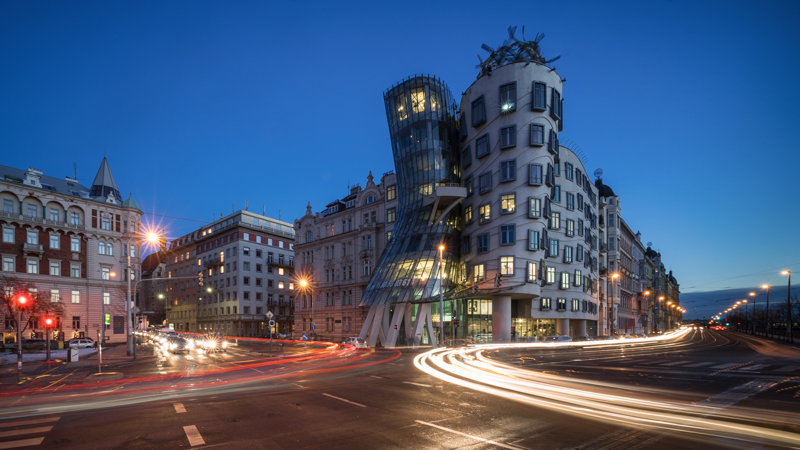
Samyang 2.8/14
The Samyang 2.8/14 is a great choice for astro and landscape because good copies are sharp across the frame from f/2.8 with very little coma and no other lens in this price league comes close to it’s performance.
You should be aware of: Using it for architecture is annoying because it has very strong mustache distortion which is very hard to correct even with profiles and Bastian had to test 5 copies to find one which was well centered.
570g (E-mount version) | $300 | sample images
buy from ebay | buy from amazon (affiliate links)
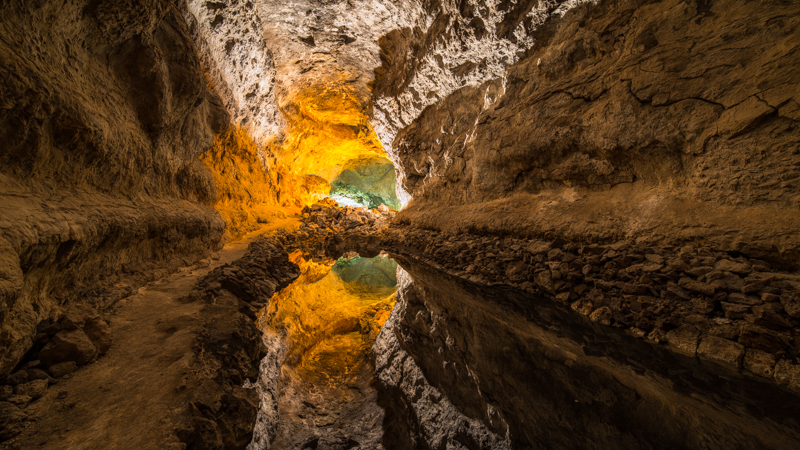
Tokina Firin 2/20
A modern, manual focus wideangle with excellent sharpness which is well suited for astro and landscape photography.
You should be aware of: Flare resistance is only average and and above average number of copies seem to be decentered.
$460 used | 490g | review | sample images
buy new for $599 at Amazon.com | B&H Photo or used at ebay.com. (affiliate links).
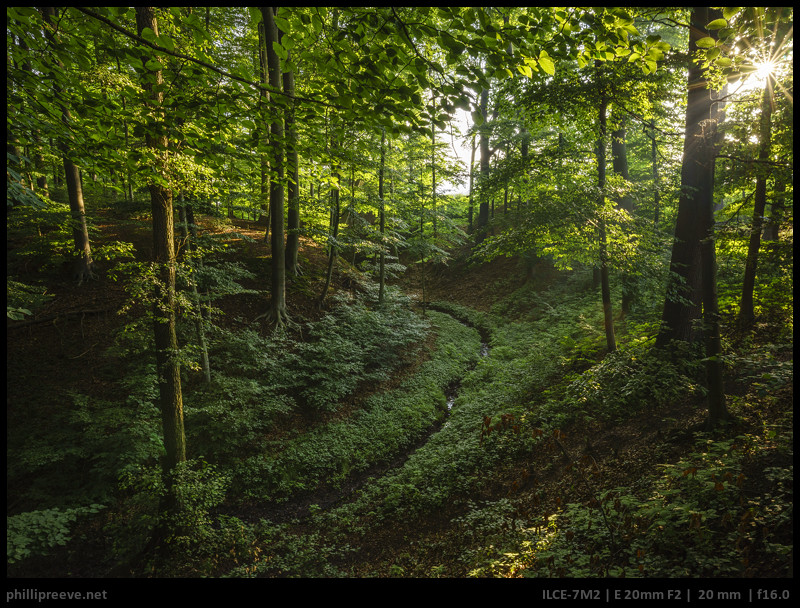
Canon new FD 20mm 1:2.8
For landscape photography the Canon nFD 2.8/20 is the sharpest affordable 20mm lens you can buy and outperforms the many times as expensive FE 4/16-35 in this aspect.
You should be aware of: The Canon isn’t well suited for astro and reportage style photography because it is pretty soft at wider apertures with strong vignetting and nervous bokeh. Also flare resistance is a weakness.
305g + adapter | $160 | full review | aperture series | sample images
buy from ebay.com | ebay.de | Sony E-mount adapters (affiliate links)
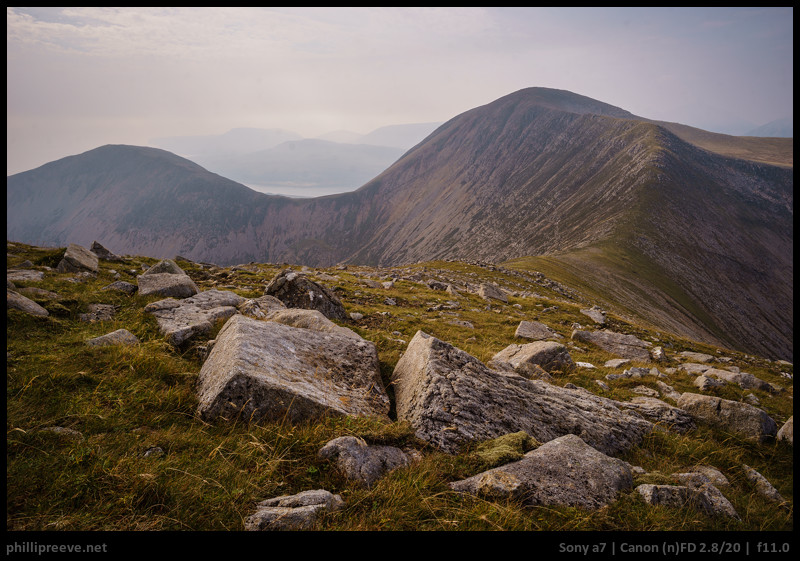
Samyang AF 2.8/24
The Samyang is as tiny as it is affordable an delivers a solid performance comparable to that of the better legacy 2.8/24 lenses.
You should be aware of: Flare resistance isn‘t very good and it shows very strong vignetting. Also AF isn‘t always dependable and build quality not very high.
93g | $279 | review | sample images
buy from amazon.com or B&H and for 299€ at amazon.de (affiliate links)
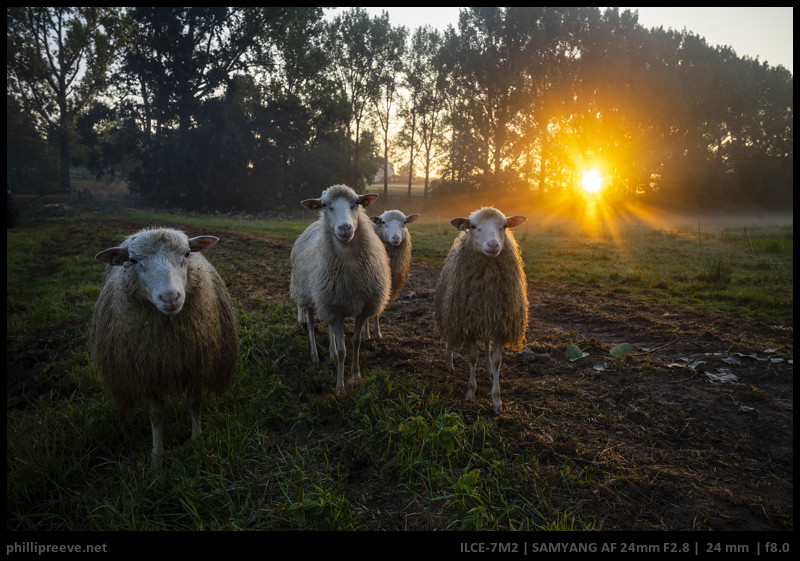
Canon new FD 24mm 1:2.8
The Canon nFD 2.8/24 is a solid choice for landscape photography while being very affordable and rather small.
You should be aware of: It feels a bit flimsy and for good across the frame performance you should stop it down to f/8. Flare resistance isn’t the best.
240g + adapter | $65 | full Review | aperture series | sample images
buy from ebay.com | ebay.de | Sony E-mount adapters (affiliate links)

7Artisans 1.4/28 FE+
Very versatile fast wide angle lens well suited to a wide range of applications like environmental portraiture, landscape, architecture and even astrophotography. Affordable and very small.
You should be aware of: Despite being optimized for Sony cameras you still need an adapter and I would recommend to get a helicoid adapter as the minimum focus distance is 70 cm without one.
490g + adapter | $499 | full review | Sample images
buy from B&H | amazon.com | amazon.de | ebay.com | ebay.de Make sure to get the FE+ version! (affiliate links)
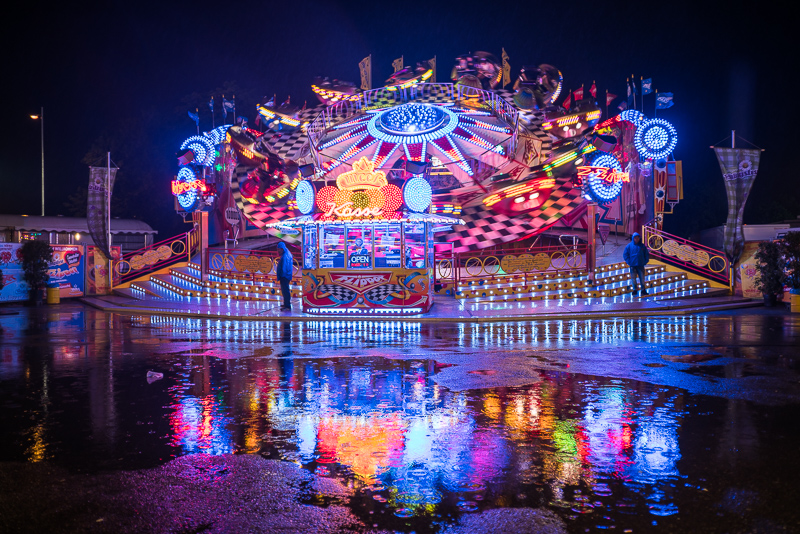
Sony FE 2/28
I like the FE 2/28 so much because it is such a versatile lens. The focal length is very universal, the bokeh is great, it is sharp where it matters and still it is small and affordable.
You should be aware of: The FE 2/28 has very strong distortion and for many images you need to activate the lens correction in you raw converter which costs some sharpness. It also has quit a bit of axial CA and manual focus sucks (as with all the other Sony FE lenses).
200g | $448 new | full review | aperture series | sample images
buy from amazon.com | B&H photo (affiliate links)
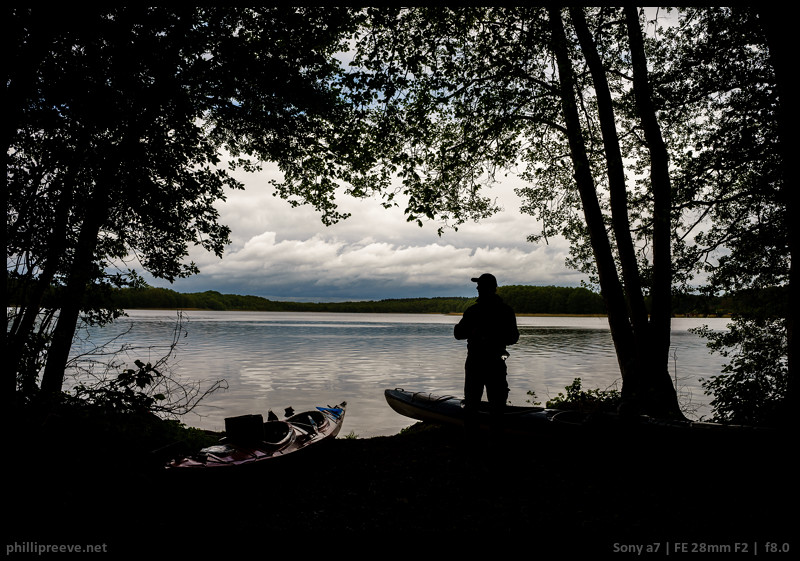
Voigtländer Ultron 2.0/28
Very small, nice Bokeh, great sunstars, wonderful build quality, stopped down sufficiently sharp even in the corners.
You should be aware of: The FE 2/28 is a strong competitor and it has huge field curvature and even some color cast in the corners on some cameras (see review), minimum focus distance without helicoid adapter is rather high for a 28mm lens.
244g + adapter | $400-500 (used) | full Review | aperture series | sample images
buy from ebay | Sony E-mount adapters (affiliate links)
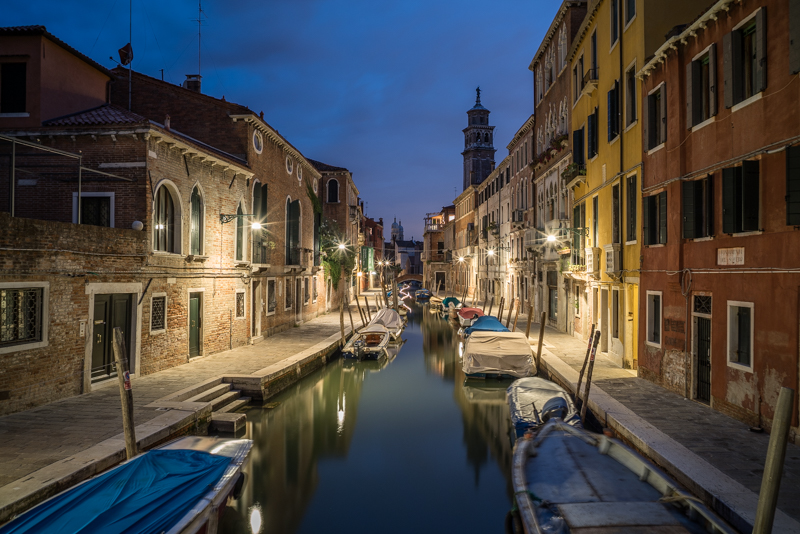
Pentax K 3.5/28
This Pentax comes quite close to being the perfect landscape lens because it is sharp, flare resistant, smallish, well built and affordable. If you find one buy it.
You should be aware of: It will be hard finding one. Oh and it only has 5 aperture blades and isn’t very fast.
261 g + adapter | $100 | review | aperture series | sample images
buy from ebay.com | ebay.de | Sony E-mount adapters (affiliate links)
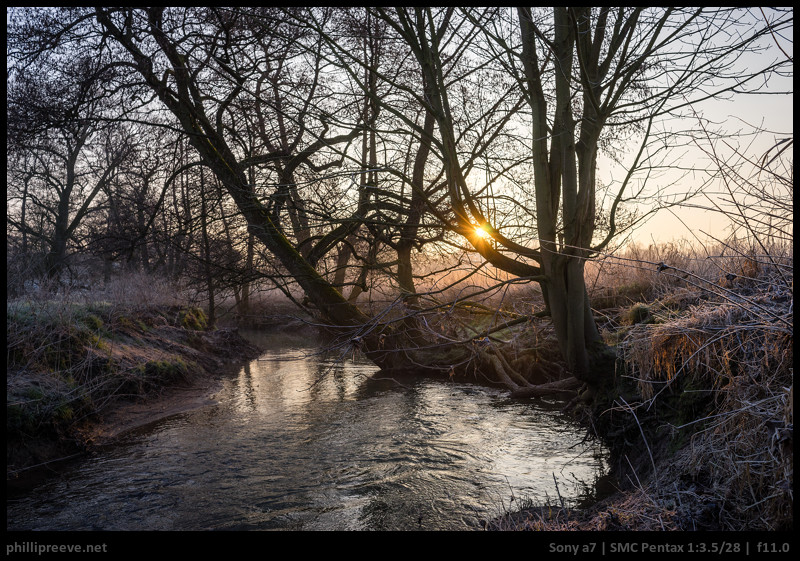
Canon FD 35mm 1:2 (convex)
A lens with a wide range of applications and good performance in most aspects, a little on the heavy side. Decent close up performance due to floating elements. Not radioactive 😉
You should be aware of: It is quite large and heavy for a 35mm lens and the flare resistance could be better. Bokeh can be funky.
370g | $130 | noland.photos short review | aperture series | sample images
buy from Ebay.com | Ebay.de | Sony E-mount adapters (affiliate link)
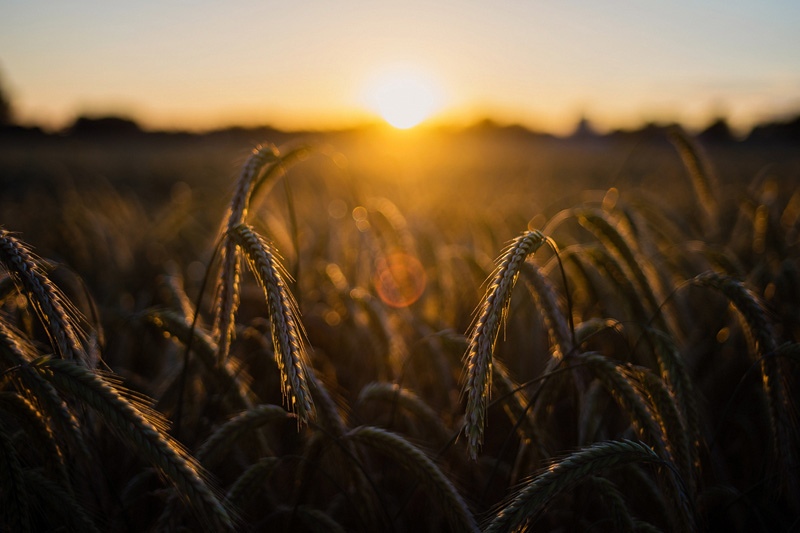
Canon TS 2.8/35
The most affordable Tilt/Shift lens you can buy with a solid performance.
You should be aware of: It is quite big and the tilt’s correction isn’t very precise and sharpness suffers if you shift it more than 6mm.
550g + adapter | $400-500 (used) | 35mm Canon FD comparison | sample images
buy from Ebay.com | Ebay.de | Sony E-mount adapters (affiliate links)
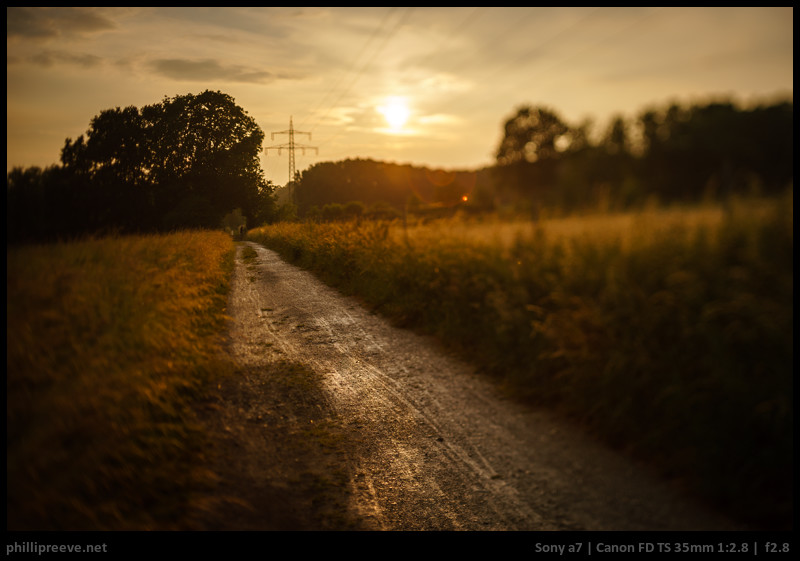
Minolta MD Rokkor 35mm 1:2.8
The Minolta MD 2.8/35 is small, affordable and it performs on a very high level.
You should be aware of: Flare resistance isn’t the best.
170g + adapter | $55 (used) | aperture series | sample images
buy from ebay.com | ebay.de | Sony E-mount adapters (affiliate links)

7Artisans 1.1/50
An affordable super fast fifty with very nice bokeh stopped down a little and very distinctive bokeh wide open.
You should be aware of: Wide open and at longer distances bokeh can be very busy. Of center sharpness is pretty bad at longer distances and flare resistance wide open is bad.
400g | $370 | review | sample images
$370 at Ebay.com, 396€ at Ebay.de (affiliate links).

Sony FE 1.8/50
Sony‘s most affordable prime is light with good bokeh and good optical performance.
You should be aware of: On older Sonys like the a7 or a7II AF is really slow. It performs much better on the a7III or a7rIII.
186g | $248 | review | sample images
$248 at amazon.com or B&H photo, 199€ at amazon.de (affiliate links).

Sigma 2.8/50 Macro
An affordable 1:1 macro with a solid performance.
You should be aware of: Build quality is inferior to that of other manufacturers and it has only 6 aperture blades.
310g + adapter | $ 70 | sample images
buy from ebay.com | ebay.de (affiliate links)
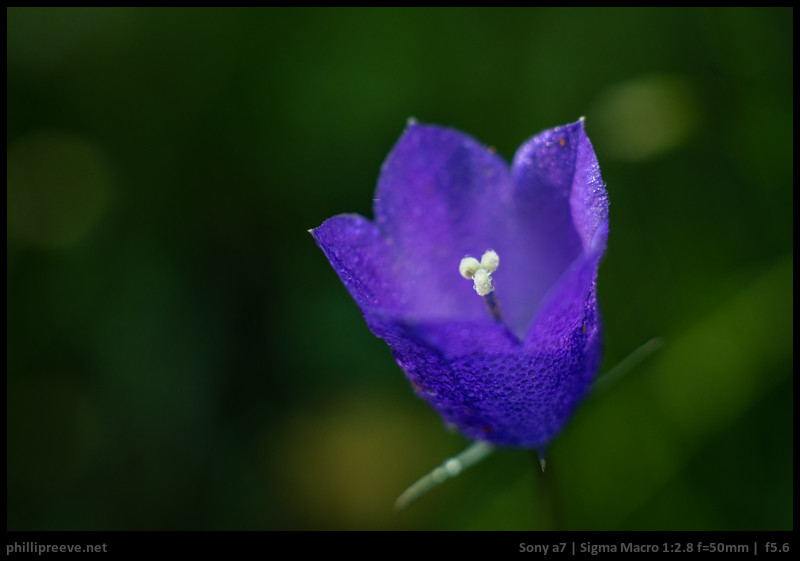
Sony FE 2.8/50 Macro
The Sony FE 2.8/50 Macro is the perfect match for your Alpha: It is very light, performs well and is still somewhat affordable.
You should be aware of: AF is quite slow, has only 7 straight aperture blades and the working distance at 1:1 is a whopping 4.5 centimeters.
236 g | $499| review | aperture series | sample images
buy from amazon.com | B&H photo (affiliate links)
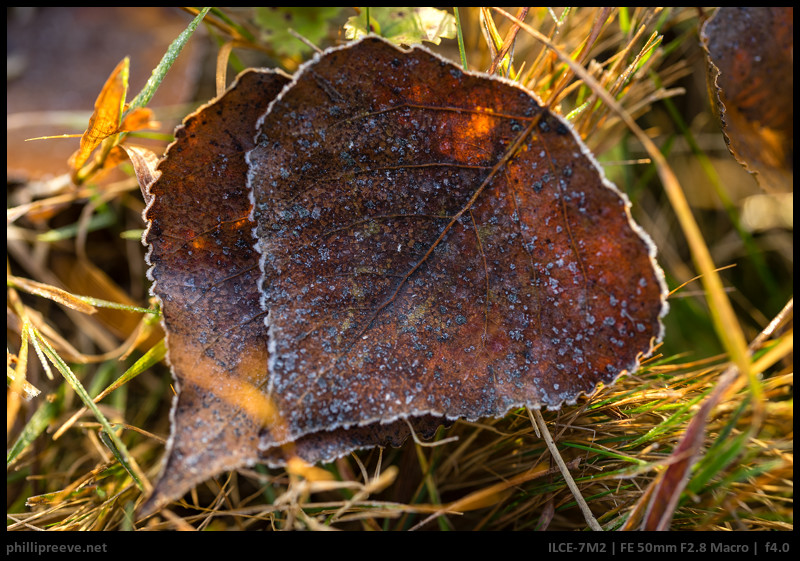
Olympus OM 3.5/50 Macro
A tiny but well built macro lens with good performance.
You should be aware of: Performance is best at a reproduction ratio of 1:10, weaker at the maximal reproduction ratio of 1:2. Only 6 aperture blades.
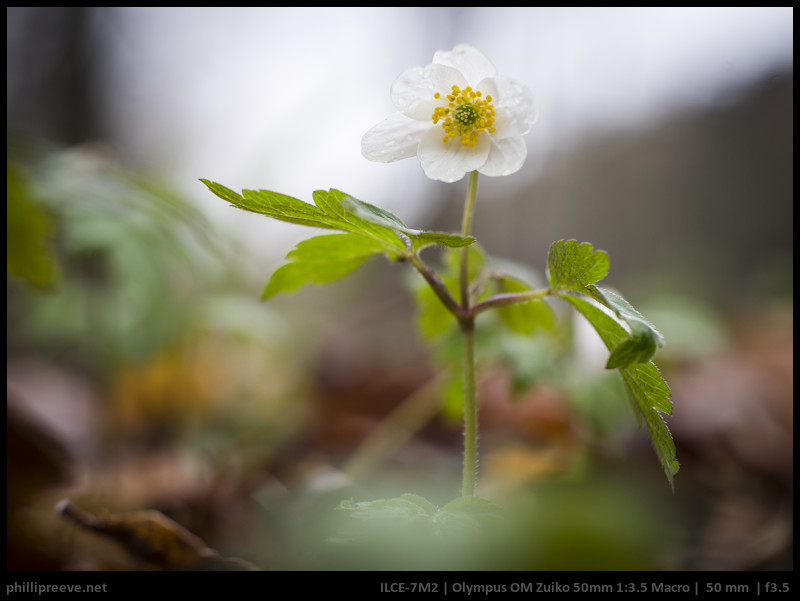
200g + adapter | $ 60 | sample images
buy from ebay.com | ebay.de | Sony E-mount adapters (affiliate links)
Minolta MD Rokkor 35-70mm 1:3.5
A handy lens which can compete with good primes from 40mm onward and it has a 1:4 macro mode.
You should be aware of: At 35mm it has stronger distortion and soft corners and at f/3.5 it isn’t too sharp with nervous bokeh which is a bit limiting. Flare resistance could be better.
365g + adapter | $ 100 | review | aperture series 35mm – 50mm – 70mm | sample images
buy from ebay.com | ebay.de | Sony E-mount adapters (affiliate links)
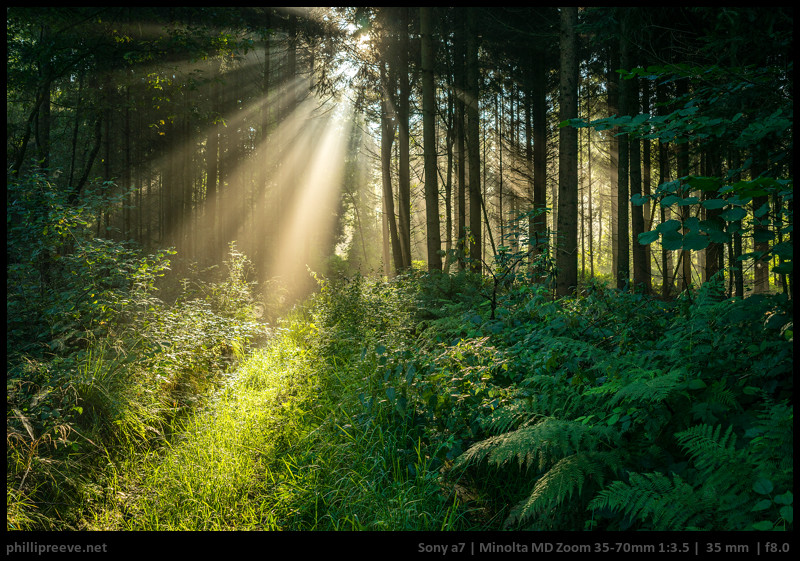
Zeiss C/Y 3.4/35-70
The ultimate zoom for landscape photography: It is basically a stack of good primes and it outperforms many prime lenses. Additionally, it has got a handy macro feature.
You should be aware of: It is a push-pull zoom and operation isn’t too pleasant.
475g + adapter | $ 300 | Review coming up in 2017 | comparison with FE 1.4/35 and 1.8/55
buy from Ebay.com | Ebay.de | Sony E-mount adapters (affiliate links)

Canon nFD 1.4/50
As far as classic normal lenses are concerned the Canon nFD 1.4/50 is the best performer at f/1.4 and also the most affordable one. My recommendation for first manual lens.
You should be aware of: Even though it outperforms other normal lenses it isn’t that sharp at f/1.4 and the bokeh is on the nervous side. Build quality could be better.
235g | $50 | full review | aperture series | sample images | MTF Diagram (FD Version)
buy from ebay.com | ebay.de | Sony E-mount adapters (affiliate links)
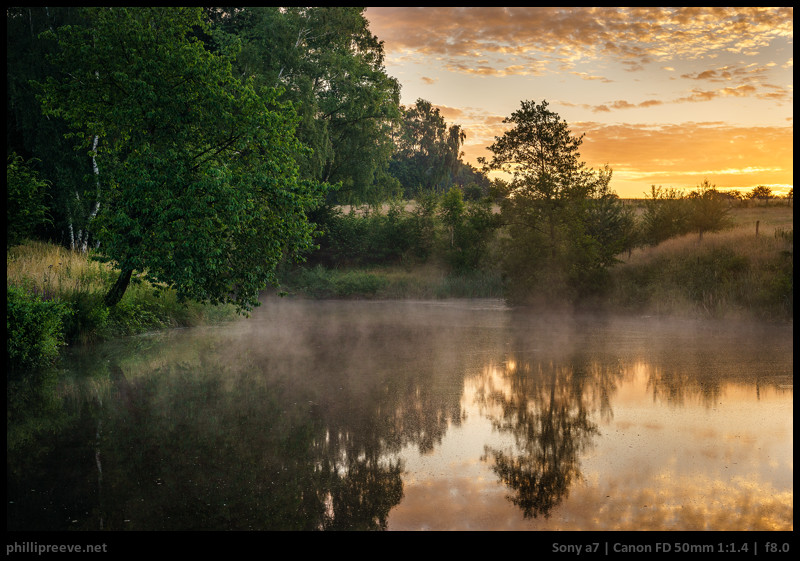
Zeiss C/Y 1.4/50
The Zeiss C/Y 1.4/50 has by some margin the best flare resistance of the classic normal lenses Phillip has used and build quality is very nice. It’s performance ist excellent from f/5.6.
You should be aware of: It has only six straight aperture blades which is detrimental to the bokeh and it is quite a bit more expensive than other 50mm lenses which are as sharp. It still can show some flare.
290g+ adapter | $ 240| review | aperture series | sample images
buy from ebay.com | ebay.de | Sony E-mount adapters (affiliate links)

Minolta MD 2/50
A great lens for landscape and architecture photography: It costs almost nothing, is free from distortion and loCA, has the most even sharpness of any classic 50mm lens Phillip has used and weights very little.
You should be aware of: It doesn’t feel very solid, other normal lenses have smoother bokeh and flare resistance isn’t too god.
150g + adapter | $ 30 | review | aperture series | sample images
buy from ebay.com | ebay.de | Sony E-mount adapters (affiliate links)

Minolta MC Rokkor 55mm 1:1.7
The Minolta MC 1.7/55 has very good bokeh for a normal lens, costs very little and yet it is small and well built.
You should be aware of: Other classic normal lenses are sharper, have more contrast, focus closer and are less susceptible to flare.
230g + adapter | $ 30 | review | aperture series | sample images
buy from ebay.com | ebay.de | Sony E-mount adapters (affiliate links)

Canon FD 1.2/55
I was surprised by how sharp this lens is, it outperforms almost any other classic normal lens in this aspect and is still cheaper than about any other f/1.2 lens.
You should be aware of: It is very large even for a f/1.2 normal lens and bokeh is quite nervous.
565 g | $150 | Phillip’s images | aperture series
full resolution collection | comparison with Minolta 1.2/58 | sebboh’s images | comparison with other normal lenses at f/8 | flickr pool
buy from ebay.com | ebay.de | Sony E-mount adapters (affiliate links)
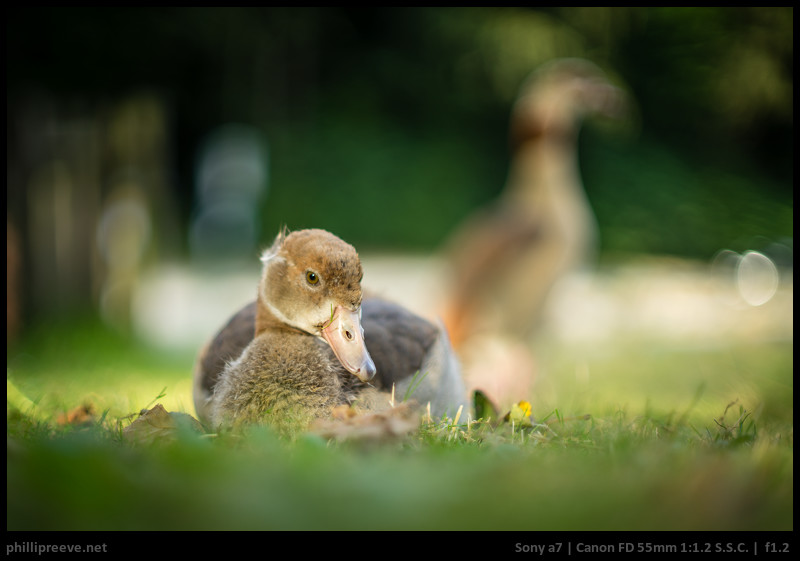
Olympus OM Zuiko 50mm 1.2/50
This is a little more expensive than the Canon 1.2/50, but has some advantages. It’s compact, much lighter, has lovely bokeh in many situations even wide open (though like any classic 1.2 it can get funky at just the wrong distance) and is very sharp stopped down. It can even do nice clean sunstars. Perhaps its most appealing feature is surprisingly good performance at close distances, very useful for portraits.
You should be aware of: It’s getting to the top of our price range. It’s also not to be confused with the earlier, but similar looking, OM 1.2/55 which is less sharp, less contrasty, and has – er – distinctive bokeh .
285 g | $400 | David’s review
buy from ebay.com | (affiliate links)
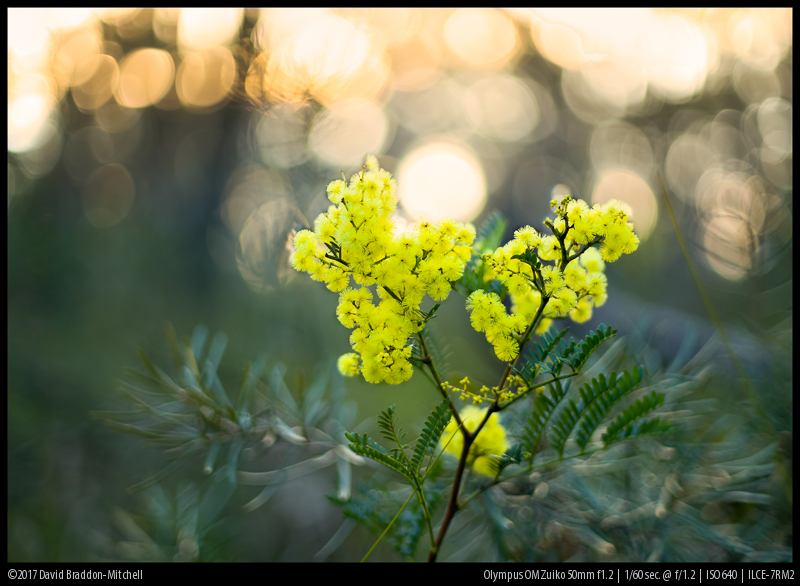
Minolta MC 1.2/58
Still Phillips favorite normal lens because it is the best mix of sharpness and bokeh Phillips has come across so far.
You should be aware of: Wide open it is soft and bokeh isn’t too smooth either so this aperture is of limited use, yet you pay many times as much for it than for other normal lenses and it is also significantly heavier and flares easily.
478 g + adapter | $ 400 | review | aperture series | sample images
buy from ebay.com | ebay.de | Sony E-mount adapters (affiliate links)
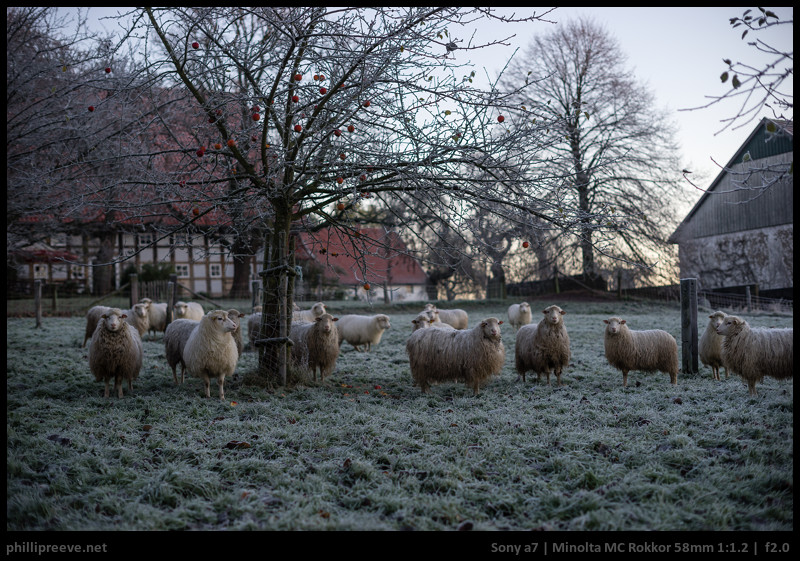
Voigtländer Color-Heliar 2.5/75
This lens is absolutely tiny and lightweight and has stellar sharpness across the field stopped down. Capable of absolutely first rate results. It even has nice bokeh.
You should be aware of: A little SA wide open and the contrast is therefore notably lower at this aperture. Contrast is never super high, but sharpness is. Less good on APS. Is a Leica Screw Mount lens, so you will need a screw mount to M mount adapter before attaching it to an M to E helicoid, which we recommend for this lens if you want to be unconstrained by MFD taking portraits. Also available in SLR mounts as SL model, but these are heavier so less recommended, though cheaper.
230g | ~$300
buy from eBay (affiliate link)

Sony FE 1.8/85
The used prices of this lens have come down to a point where it fits into that list. The lens is well built and balances very nicely on every E-mount camera. Optically, this is the sharpest 85mm lens under 499$ that performs also very well in almost every other category. Furthermore, it has silent and fast autofocus which is handy in many situations, especially at 85mm. The price/performance ratio is very good.
You should be aware of: Although the bokeh is good in most situations, it is not as spectacularly smooth as the bokeh of the Tokina 2.5/90 or the Samyang 1.4/85.
371g | ~$499 (used) | full Review | FE 1.8/85 vs. FE 1.4/85 GM | aperture series | sample images
buy from Ebay.de | Ebay.com (grey import/used) or from Amazon.de | Amazon.com (new)
Samyang 1.4/85
It shows a little less optical errors than many fast legacy lenses, has very smooth bokeh and it is even cheaper brand new. Wide open great for shooting portraits under available light.
You should be aware of: Never gets as sharp as other 85’s, build quality isn’t very good.
480g | ~$290 new | comparison with other 85mm lenses | photozone review on Canon FF
amazon.com | ebay.com (affiliate links)

Jupiter-9 2.0/85
My favorite among the Jupiter lenses: because of the Sonnar design very soft bokeh, 15 rounded aperture blades for round circles of light even on stopping down, very cheap/light/small.
You should be aware of: flare resistance, no click stops, gets never as sharp as more modern lenses in the corners
318g + adapter | ~$145 | full Review | aperture series | sample images
buy from ebay | Sony E-mount adapters (affiliate links)
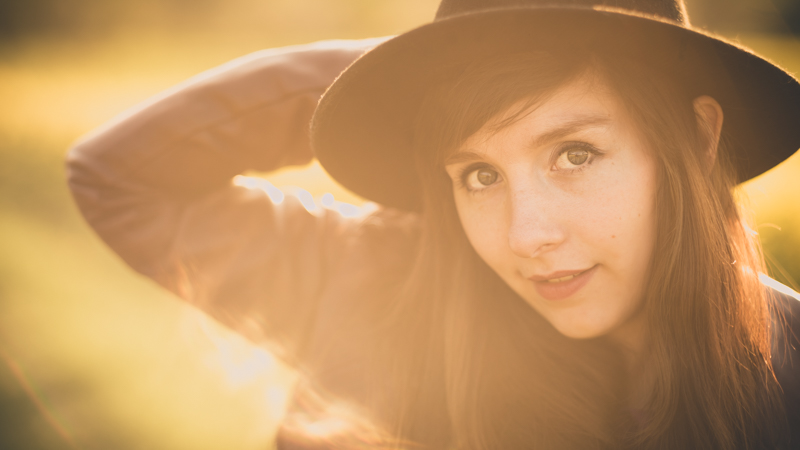
Tokina AT-X 2.5/90 Macro
One of the sharpest lenses Phillip has ever tested. It also has very smooth bokeh (often referred to as “Bokina”), is pleasant to handle and can be used for a wide range of applications. One of Phillip’s favorites.
You should be aware of: The coatings aren’t very effective, especially with larger bright areas there is significant veiling flare.
530g + adapter | $ 200 | review | aperture series | sample images
buy from ebay.com | ebay.de (affiliate links)

Canon nFD 2/100
This lens combines nice bokeh and brilliant sharpness across the frame stopped down. The most amazing fact about this lens is it’s tiny form factor in regard of it’s bright aperture.
You should be aware of: Chromatic aberration control wide open could be a little better.
445g | ~300€ | aperture series | user review (German) | user review
buy from Ebay.com | Ebay.de | Sony E-mount adapters (affiliate links)

Minolta MD 2.5/100
Phillip’s favorite allround short tele because it is very sharp from wide open with excellent bokeh but also a very capable landscape lens
You should be aware of: Contrast at f/2.5 is lower, CA is moderate and it flares very easily.
310g + adapter | $ 150 | Phillip’s review
buy from ebay.com | ebay.de | Sony E-mount adapters (affiliate links)

Zeiss Sonnar T* 3.5/100 (C/Y)
This lens combines great sharpness across the frame even wide open with a very flat focal plane and lovely bokeh. Furthermore, it has the great Contax build quality and is very light. It’s one of the all time keepers in Jannik’s bag.
You should be aware of: It has “only” f/3.5 and unspectacular sun stars.
285g + adapter | $ 250 | sample images | aperture series | full review
buy from Ebay.com | Ebay.de | Sony E-mount adapters (affiliate links)
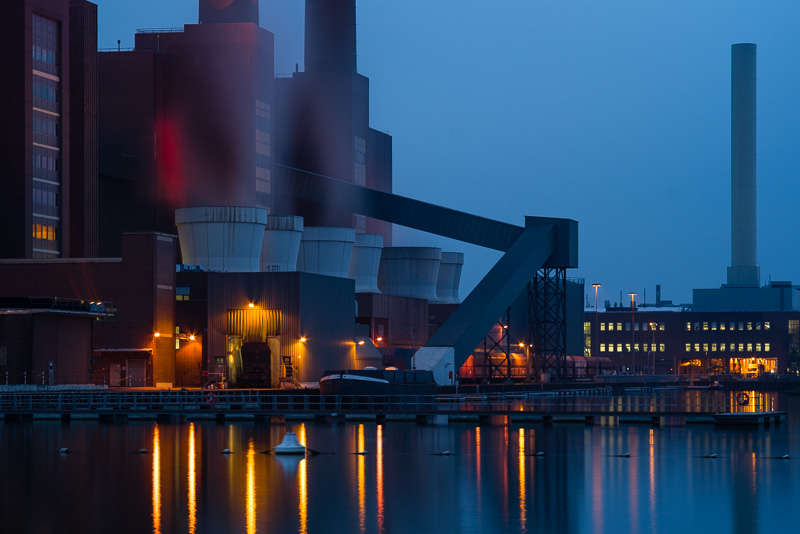
Minolta MD 4/75-150
A very small and affordable zoom which is sharper than the many times as expensive Sony FE 4/70-200 G.
You should be aware of: At 150mm the corners suffer and it has quite a bit of axial CA. The zoom range is of course quite limited and veiling flare can be an issue.
445+ adapter | $ 40 | sample images
buy from ebay.com | ebay.de | Sony E-mount adapters (affiliate links)

Olympus OM 2.8/100
Absolutely tiny lens, with a solid performance for a fair price.
You should be aware of: It has a rather long short focusing distance of 1 m. Avoid the older version without multi coating.
230g + adapter | $ 80 | sample images
buy from ebay.com | ebay.de | Sony E-mount adapters (affiliate links)
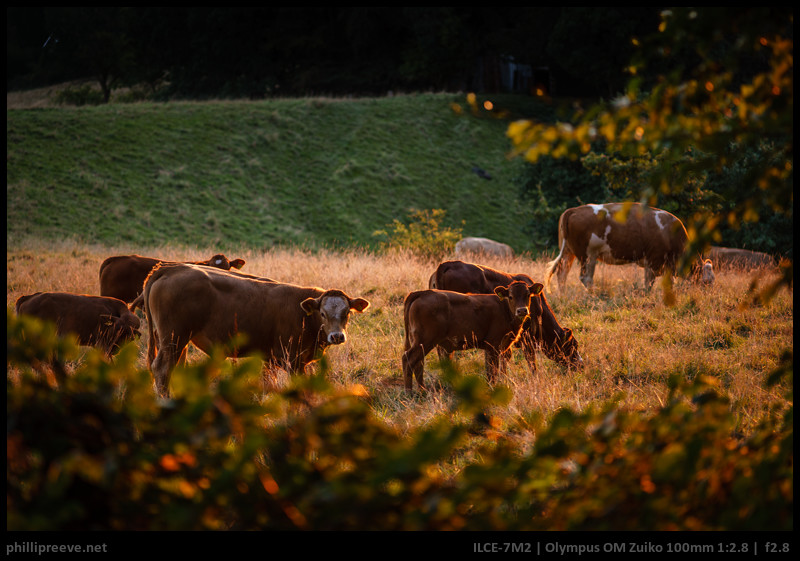
Samyang 2/135
Outstanding performance in every regard. One of the few true APO-lenses, sharp like a razor blade. Even the quality control seems to be more consistent compared to the 2.8/14 or the 1.4/85.
You should be aware of: It’s a brick of a lens.
830g + adapter | $400 | full Review | aperture series | sample images
buy from Amazon.com | Amazon.de | Ebay.com | Ebay.de (affiliate links)
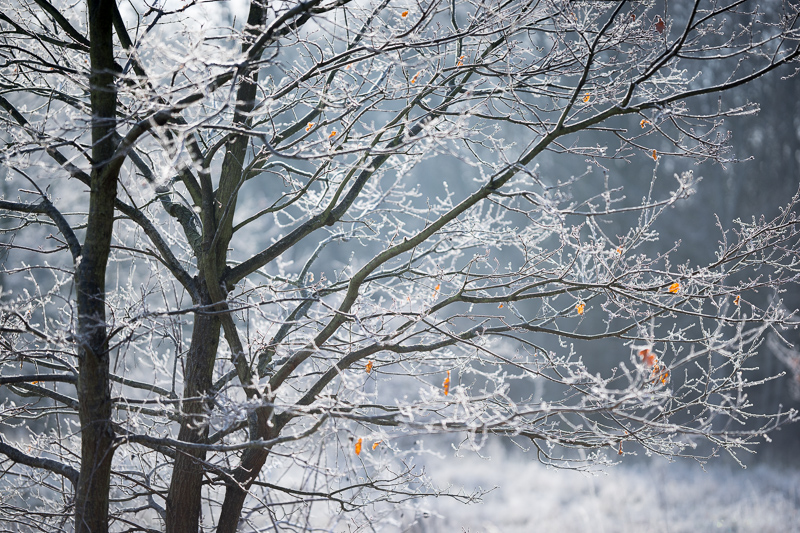
Canon nFD 2/135
A very sharp lens with very nice bokeh. It’s a cheaper (but slightly inferior) alternative to the Samyang 2/135 with better build quality and nicer focusing.
You should be aware of: More chromatic aberrations wide open than the Samyang 2/135, not the best minimum focusing distance
660g + adapter | $250 | aperture series
buy from Ebay.com | Ebay.de | Sony E-mount adapters (affiliate links)
Canon new FD 2.8/135
A small, sharp and very affordable lens with smooth bokeh.
You should be aware of: Build quality isn’t the best and it has rather strong axial CA.

395g | $50 | Phillip’s review
buy from ebay.com | ebay.de | Sony E-mount adapters (affiliate links)
Canon new FD 3.5/135
Small, cheap and very sharp from wide open, also bokeh is very smooth.
You should be aware of: With only f/3.5 the quantity of bokeh isn’t very high and LaCA is certainly present (but still easily correctable).
325g | $40-50 | 135mm shootout
buy from Ebay.com* | Ebay.de* | Sony E-mount adapters (affiliate links)

Nikon Ai-s 180mm 2.8 ED
Very nice and soft bokeh, great build quality. Sharpness except for the extreme corners (ok at f/11 on A7rII) very good as well.
You should be aware of: very front heavy and therefore not the greatest handling.
800g + adapter | $350 | full Review | aperture series | sample images
buy from ebay | Nikon adapters (affiliate links)

Canon EF 4/70-200 L
I would prefer it over the FE 70-200mm 4.0 any day. Even taking an adapter into account it costs significantly less and Bastian couldn’t really find any fault with this lens that would spoil the game for him.
You should be aware of: for decent AF you need a decent adapter which will set you back ~200-300$. There is quite a bit of sample variation, so best try before buy. Flare resistance is not great.
705g + adapter | ~$450 | full Review | sample images
buy from ebay | Sigma MC-11 AF adapter (affiliate links)
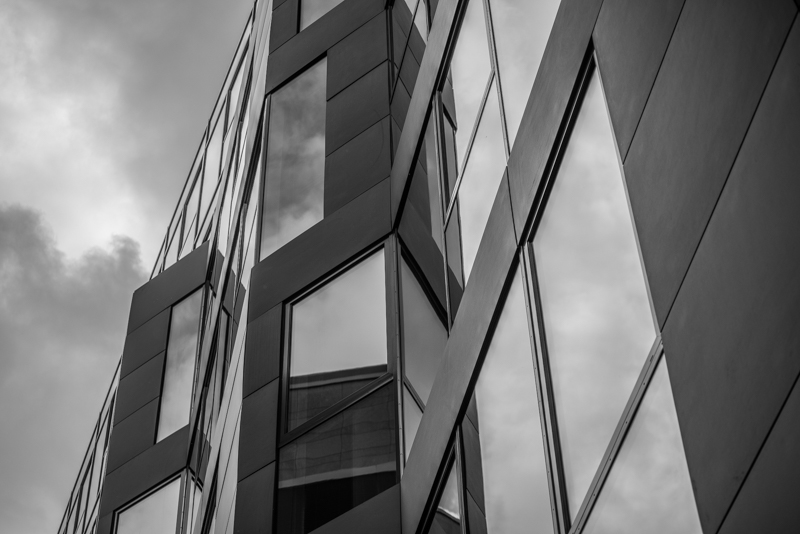
Minolta MC 4/200
A very sharp lens which can be had for very little money.
You should be aware of: It displays quite a lot of axial CA and is rather slow to focus. The short focusing distance of 2.5m can also be limiting.
520g + adapter | $ 35 | sample images
buy from ebay.com | ebay.de | Sony E-mount adapters (affiliate links)
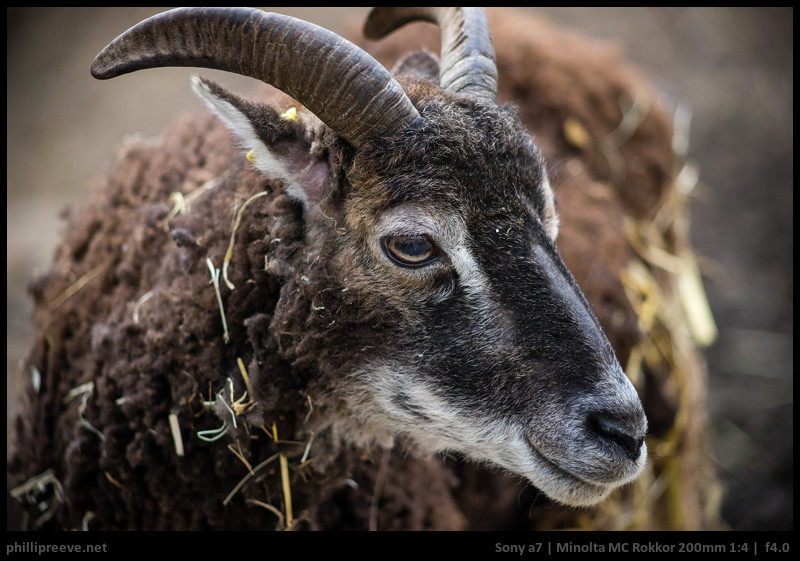
Canon FD 4/300 L
The Canon is one of Phillip’s favorites: It is very sharp, has nice bokeh and it is easy to focus.
You should be aware of: It can show some axial CA wide open and flares easily. While it is small for a 300mm lens it is still a substantial lens.
1060g | $350 | full review | aperture series | sample images
buy from ebay.com | ebay.de | Sony E-mount adapters (affiliate links)
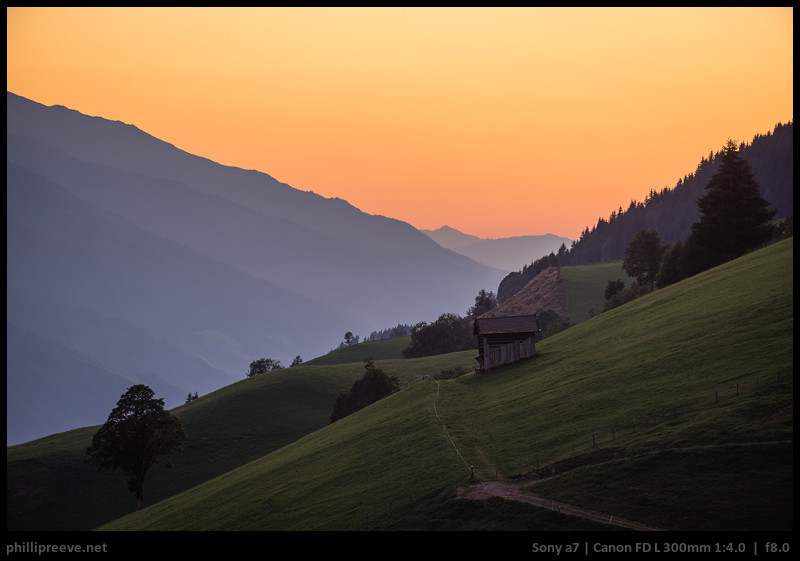
Phillip’s favorite kit of <$499 lenses
I have a wide selection of lenses in my cabinet so that I can match my lens selection to what I plan to shoot but if I was allowed to keep only 4 of my < $499 lenses it would be these.
Each of these lenses performs great as a landscape lens stopped down to f/8 but they also have a very pleasant character wide open and allow me to play with shallow depth of field.
Bastian’s favorite kit of <$499 lenses
I started using an E-mount camera because of size and weight in the first place, so I concentrate more on small and lightweight M-mount lenses here.
This is a great setup for travel and street photography. The 7Artisans 1.4/28 is a versatile allround lens, wide open nice bokeh for environmental portraits and stopped down good sharpness for cityscapes. You can even use it for some astrophotography!
The Jupiter-9 is your lens for more intimate portraits and shots of details with very soft bokeh. The Voigtlander 5.6/12 will round things up with some crazy perspectives.
My setup consists of just three lenses so you might have some cash left for the great Voigtlander VM-E close focus adapter* (affiliate link) or the Hawk’s factory helicoid adapter which can be used with all of these lenses.
Jannik’s favorite kit of <$499 lenses
In these costy days, we sometimes forget that good lenses don’t have to be very expensive. One great thing about the E-mount is the possibility to mix lenses with different mounts to do some “cherry picking” between the camera systems.
- Canon nFD 2.8/24
- Contax 3.4/35-70
- Contax 3.5/100
This is a budget but great performing landscape kit. These lenses are not that big and the cover the most important focal lengths in decent quality. With the Contax 3.4/35-70 and the 3.5/100, two of my absolute favorite lenses are in that kit.
David’s favorite kit of <$499 lenses
Hard choices! The thing to remember is that for this price point we can get enough good glass that our ability to get good images is not much less than if we spent ten times more money. So how to choose?
I think we need at least one reasonably fast lens to capitalise on the bokeh possibilities of our full frame camera. I would normally choose a fifty for this, but I’m going another way with fifties so I’ll take the Canon nFD 2/100. Fast, sharp, a bit of CA to clean up but f2 gives great bokeh on a full frame sensor. For a fifty I’m going to take a modern lens: the Sony 2.8/50 macro. This lens is remarkably sharp at landscape distances for a macro, it’s extremely light which makes it a hikers friend, and has superb macro IQ. The fly by wire focus in macro is slow but accurate. The eye AF works well for portraits, even if the general AF is not great. For a wide it’s hard to go past the FE 2/28, despite the MF experience. But we could save money by getting one of the classic 28s, and be very little worse off, except perhaps for environmental portraits.
I should say that it’d be very hard to go past the Zeiss Contax 35-70 f3.4! Originally it was on my list, then I changed it, and back again!
And finally this list is what I would take if I could have only three: that’s very different from ‘favourites’ in some other sense, perhaps less useful but more exciting lenses. This is my Sensible List!
- Canon nFD 2/100
- Sony FE 2.8/50 Macro
- Sony FE 2/28
Juriaan’s favorite kit of <$499 lenses
Until recent I was a student without any budget for expensive lenses. Therefore I looked for cheap lenses at thrift shops which resulted in quite some nice lenses for almost nothing. These lenses, that often costed me less than €10,- gave me a lot more freedom and fun than any modern budget lens would have.
This is the kit I still bring very often for a walk in the forests near my home. The Nikkor 2.8/35 is very sharp stopped down for landscapes. The Minolta is nice for portraits and details and has very nice bokeh, stopped down it is sharp across the frame as well. The Canon new FD 3.5/135 is very sharp with good bokeh and not too big. The Tamron 46A isn’t very sharp but this lens has a special rendering I really like every now and than.
Honorable Mentions
We have no personal experience with these lenses but because of reports from reliable sources we are pretty sure that they would deserve a place on this list. When we manage to find the time to test them ourselves we will most likely add them.
- Sigma Art 2.8/70 Macro – From reports it is an excellent optical performer.
- Samyang 1.4/35 – performance seems to be close enough to that of the Sony 1.4/35 but we haven’t used it yet.
- Samyang 2.8/35: Tiny but with solid optical performance and very affordable.
- Voigtlander 3.5/20 – Very small and by f/8 it seems to be a good performer with modern coatings.
- Olympus OM 3.5/21 – A well performing and very small 21mm lens. Avoid the older non MC versions.
- Canon EF 2.8/40 Pancake – Affordable, small and optically very capable.
- Canon EF 2/100 – A very attractive portrait lens with AF (via suitable adapter)
- Nikon Ai-S 2.5/105 – Often considered to be one of the best ~100mm lenses
Lenses which didn’t qualify
- Sony FE 3.5-5.6/28-70 – The performance is decent for a kit lens and it is very versatile but the performance isn’t quite good enough to make it to the list.
- Jupiter-12 2.8/35 – better suited for film cameras.
- Jupiter-3 1.5/50 – Small, fast and affordable but wide open too busy bokeh for my taste.
Other Articles
This site contains affiliate links. If you make a purchase using any of the links marked as affiliate links, I may receive a small commission at no additional cost to you. This helps support the creation of future content.
The Team
Latest posts by The Team (see all)
- Sony FE Lenses: The honest Guide for the A7/A9/A1 Series - March 18, 2025
- Guide to best Sony E-Mount 35mm Lenses for A7/A9/A1 series - March 8, 2025
- Guide to the best Portrait Lenses – Sony A7/A9/A1 series - February 22, 2025


Good summary, guys. The personal experience is also a nice touch.
My choices would be:
Olympus OM 21mm f/3.5
Contax G 45mm Planar
Contax G 90mm Sonnar
I know the Contax G adapter are viewed with some suspicion and/or frustration, but the glass is still really great!
And I’ve found the Olympus does a nice job head to head against the Canon FD 20mm, but at such a smaller size.
The 3.5/21 is definitely missing on the honorable mentions list. It is a very interesting lens due to it’s size.
My copy on the OM Zuiko 3.5/21 back in the day of film had a *lot* of CA; but people speak so well of it in the more demanding digital realm with 1:1 peeping that it makes me wonder if there was something wrong with mine back in the 80s!
I use to have the 21mm f2.0 form Olympus. far better.
unfortunately stolen and very hard to find..
+1 for the OM 21 3.5 MC.
There may be a lot of sample variation (like the OM 24.2,8 MC has). Would be curious to see how it compares with the FD 20 2.8.
The Olympus OM 18 3.5 is also a very good lens. Massive vignetting, but stopped down it’s very sharp in the corners. Usually not under €/$ 499, but sometimes turns up for less (mine cost €399 a couple of years ago).
I agree about the 3.5/21 and have added it to the honorable mentions.
I have reviewed both Contax lenses but because of the cumbersome adaptation they didn’t make it to the list.
Does the adapter make it an APS-C so 1.6X or does it stay as original.
it stays as original
I’m deeper stuck in the bog of manual lenses…
Sweet.. thanks for the recommendations. I prefer to shoot manual when possible and have been looking for cheaper non-Sony glass for when I make the jump from APSC to fullframe soon. And these’ll make use of Sony’s IBIS.
Good article, some great lenses on there. I never got along with the FD 20mm, but didn’t spend a ton of time with it. The Contax G 90 deserves honorable mention at least. It’s sharper across the field than the Nikon 105/2.5, color and contrast between the two are similar.
When you guys run out of lenses (yea right) you should check out some of the older M42 Super Takumars. Small & light, they remind me of a lot of RF lenses, just with a longer adapter. Stopped down they seem like real strong contenders, but need to do more side by sides with them.
I reviewed it and liked the optics but the focusing experience put me off
Never had the Contax G90 or 85mm 2.8 – but I love my shabby Sony 85mm 2.8 SAM with the same optical formula for portrait.
Never really tested it myself outside of practical use – but most reviews are impressed and I once read a test comparing it to the Zeiss 85mm 2.8 – which only found slightly higher contrast on the Zeiss, probably due to better coatings.
Native AF on Sony via Adapter is great – but MF is of course not that good given the all-plastic body and slim focussing ring.
The canon 50 1.8 stm for $125 plus a Fotodiox $99 adapter is sharper AND less expensive than the FE 50 1.8, and on a 7ii or 7Rii would focus much better than the Sony.
you are probably right about that but we haven’t tested that lens yet and I would probably still prefer the FE 1.8/50’s bokeh
Thank you guy´s …..great work!
i would add the Olympus OM 24mm 2.8 MC
awesome lens …..much sharper than the 21mm
but yes…the 21mm focal length is more interesting
I own a OM 2.8/24, review will come in Q1/2017 😉
Looking forward to it.
Is it the “MC” version?
it is
Great. It will be exiting!
yes, the OM 24/2.8 is far better than the expensive OM 21/3.5, and has lesser CA. A real gem is the OM 28/f/3.5, very even across the frame and excellent sharpness at f/5.6…8. Its super super tiny and costs almost nothing. Get the newer MC Version.
I own a MC 2.8/24 and like it, especially for the small size.
I also own a 3.5/28 and while it is surprisingly sharp the single coating is annoying. I kept my eyes open but never found a MC copy.
I’m pretty sure there never was an MC 3.5/28 OM; the f3.5 was replaced with the 2.8/28 at about the time they started multicoating. I don’t know what the 2.8/28 is like – never had one – the internet scuttlebutt is that it’s not as sharp as the older 3.5, which may (or may not) be true.
“A real gem is the OM 28/f/3.5, very even across the frame and excellent sharpness at f/5.6…8. Its super super tiny and costs almost nothing. Get the newer MC Version.”
I’ve always read that the OM 28 3.5 was never made in an MC version.
It is indeed very sharp, but the images seemed to lack the ‘coherence’ of some lenses (the images somehow looked ‘grainy’ rather than having smooth tones).
Agree 100%. It is surprisingly sharp and tiny but I couldn’t find any evidence that it ever came as a multicoated version and the single coating is an issue.
This is more of a Good Enough but Loved Anyway List of optics – really appreciate the honest remarks for us as constant buyers. It will doubtless create an even greater lust for vintage manuals, which is one of the most noble humanitarian efforts on earth today.
Any interest in the M42 Takumar lenses? I have several of the ‘better’ ones and they easily perform on a par with some/many of the one mentioned here. I noticed Fuji is also not on the list. Is there a dissent on Japanese lenses here? Just asking…
Thanks again for a large effort on a favorite subject!
You can be certain that we will have plenty to criticize when we create the “The very best lenses for the Sony a7 series” article. We don’t want to sell lenses we want to give you a good basis for an educated buying decision.
Neither of us is too interested in M42 lenses but we have little experience with them. I am currently working with some Minolta MD and Olympus OM lenses.
Great list. I test for IR and try to only keep lenses that do well. I have test more than a 18 standards and only the Konica 57mm shoes no hot spots. Have not tested the Nokton or the zeiss – though the Yashica c/y failed badly.
I’d love to read about your findings Michael, mine can be found here: http://www.fredmiranda.com/forum/topic/1376190/0?keyword=Infrared#13107441
My overall finding for best/favourite IR lenses on my converted A7 are:
“I can vouch for the Silver nose, single coated OM Z 21/3.5, 24/2.8. 28/3.5 and 50/1.8, as all being excellent performers in IR, the 35/2.8 isn’t as sharp, but the Nik E 35/2.5 has a very good IR reputation”
What about Canon LTM lenses?
My favorite – Canon 50mm f1.4 LTM
don’t know that lens. yet 😉
http://aperturepriority.co.nz/2013/05/28/the-japanese-summilux-canon-50mm-f1-4-ltm/
My first LTM (Leica Thread Mount) Canon lens was the 135mm f3.5, not very popular but quite sharp with nice bokeh
Thank you awesome list! What about the contax 80-200 f4? I hear it is on par with the Canon 80-200 L and it’s cheaper at around $200.
the Canon has better CA correction and I had some hotspot issues with the Contax. The corners were better than with the Canon though.
Yes, actually it is missing in that list. I have one of them here and also an aperture series and sample images. Will add that lens to the list when I find some time. It has decent corners stopped down and nice contrast. I didn’t find the hotspots in my images, need some additional testing.
I love the Minolta MD 100mm f/2.8 macro and also the Minolta MD 70-210mm f/4.0 “Beer Can” You can find both of them used for less than $400
Very nice article and lists !
I have the Minolta Rokkor MD 35mm f2.8 but find my Pentax smc-a 35mm f2.8 sharper and more resistant to flare. I also have an smc-a 50mm f1.4 which is my sharpest old prime. My other favourite is the Helios 44-2; not sure if I was just lucky to get a good copy but it”s my favourite lens.
that is very possible, my Pentax K 3.5/28 is great in both aspects. I’ll keep my eyes open.
Thanks for another very enjoyable read. what about Micro Nikkor AiS 55mm f2.8?
it would probably deserve a spot on the list but I haven’t had the chance to use it yet
It’s not realistic to expect all perceived favorite lens to get Phillips attention, just the better ones, hopefully. The learning process is where the greater value lies.
The Reeve contingency does one thing so well, making awesome images with any lens to shoot with!
Thanks for this wonderful website !
My best combo if I want autofocus with override, is Viltrox adapter and Canon EF 40/2.8 STM. Small, cheap and works perfect at all settings on A7.
Where is the Zeiss Touit 32mm f/1.8 Lens (Sony E-Mount)
I love this lens
I have no experience with it but since it is an APS-C lens I see little reason to put it on this list no matter how good it is.
Hi, I really like and appreciate this list. Got some of the lenses from the recommendation and did produce some really nice pictures.
What about Canon FD 135mm 1:2.5 S.C. ? I have just recently bought it for £50
I think you will be happy with the 2.5/135. I have reviewed the nFD 2.8/135 and it is a decent performer.
how come the canon nfd 35/2.8 did not make to the list?
my list would be
olympus zuiko MC 24/2.8
pentax K 28/3.5
canon FDn 35/2.8
nikon AIS 50/1.8 long nose
vivitar series 1 90/2.5
The total cost is still under $499 🙂
solid choice 🙂
Thanks.
If possible, please review the Nikon 50/1.8 AI or AIS long nose.
It is super sharp. I found it sharper in the center than the Pentax FA 50/2.8 macro, which is known to be the sharpest Pentax lens. The Pentax macro is sharper at the corners, but the Nikkor catches up from f/8. So I sold the Pentax.
The Nikkor also beats the Olympus Zuiko 50 1.8 “made in japan” version, which is also excellent in performance and more compact.
I found the Nikkor to be a perfect all-around 50mm.
I bought the Minolta MC 50/1.4 and MD 50/2 based on your recommendation. I love how the 50/1.4 renders, better than the Nikon 50/1.8.
The MD 50/2 is sharper at f/2, but the MC 50/1.4 at f/2.4 would match it at f/2. At f/2.8, they are equal. f/4 and beyond, the MC 50/1.4 is sharper at midframe and corners.
Overall, I am not as impressed by the 50/2’s performance.
I like the MC 50/1.4 a lot. It will replace the nikkor. 🙂
Thank you for your great recommendations.
I am still waiting for your Olympus 24/2.8 review.
I agree with your findings. I managed to get hold of a MD 50/1.2 and this is sharper than any of the other 50mm MD lenses I have tried (1.4, 1.7, 2) until f11 where they all get very similar. I think the 1.2 still beats the others fractionally for contrast, though. The F2 is a fantastic performer for the cost and the weight, though.
No Konica Hexanon lenses on your list…?
That’s a little poor 🙁
That’s not poor, we simply can’t know all lenses out there and it wouldn’t be authentic if we would recommend lenses that we don’t know. Luckily for you, I have just received the Hexanon’s 3.5/28, 2/35, 1.8/40, 1.4/50.. So maybe they will make it to the list soon.
Thanks for the insight. Wondering if anyone has any input in deciding between a Jupiter 9 and a Canon FD 85?
I had both, FD (had ‘new’ FD) 85/1.8 has less flaws, has more modern look and is sharper. The jupiter has more character (more glow, specific against light, warm colours).
Bu they both are quite cheap, it’s a good idea to check them by yourself, FD and m42/m39 are very versatile adapters;)
Did you try the sel50f18f. With the firm ware upgrade? For $200 (often on sales) this is a great native lens option for landscape. It is extremely sharp stopped down.
I actually bought one a couple of weeks ago because when I reviewed it the new firmware wasn’t released yet. Didin’t get a chance to use it though.
missing Pentax K 135/2,5 on the list, which is basically one of the best 135mm lenses ever made.
Do you have any sample images to share?
Though the Pentax A* 135/1.8 is even better…
I love your reviews and articles, guys. Thank you for your work. I have the fe 28 and really love it, was excited to see it make the cut.
Here’s A few favorites from my collection:
Canon fl 55mm f1.2
Leica Summicron-r 50mm f2
Tamron adaptall 01a 35-80mm 2.8-3.5
Nikkor-h 85mm 1.8
Konica Hexanon 135mm f3.2
You really seem to love the c/y zeiss 100mm 3.5 from what I’ve read, might be on the short list.
Thank you for your time, testing and writing! Your reviews are one of my favorites.
The only lenses I miss are the gems of Carl Zeiss Jena (35 f2.4, Pancolar 50 f1.8, Sonnar 135 f3.5 )!
Greetings from the baltic sea, Reinhard!
Jannik,
I am also a big contax zeiss fan (35-70 and 50 1.7) and am looking for an affordable wide angle lens. I was wondering if there was a reason you did not choose the 28mm f2.8 mmj given the inclusion of two other contax lenses? Do you not think that it is worth the $200-300? I am looking for advice.
I didn’t include the Zeiss because I think the Pentax K 3.5/28 is a better choice for less money.
Hi Phillip. Great write up and overview on so many great and affordable lenses. I am starting to shop for an A7s and thinking about my kit when I came across your post. It was nice seeing many familiar images of yours’ from “the old days” when I could still access FM. Cheers! Jacob.
Hi Jacob,
Why not start a new account? I am sure people would enjoy images not just from your hiking trips 🙂
Phillip
Hi Phillip,
I really enjoy your blogs and reviews. Those give me many insights since I’ve just changed to A7II. Since many of your reviews are talk about landscape photography, do you have any lens recommendation for event photography?
Cheers!
Ed
Sony GM 24-70 😉
Hi Phil,
Thanks for replying. Have you compared it with Canon 27-70 f2.8 L series + metabones adapter? Will the AF performance be much different? as I can spend lower bucks on that set 😉
Cheers!
I have no experience with either but I find the images from the GM24-70 more appealing and it certainly won’t perform worse than the L.
Hello !! And first, thank you for your great site !! I am a little confused about what to do. I have recently sold my A6000 and will very soon buy me a new A7 II. The lenses on this site, are they all fullformat, and can I use them on a A7 II without any adapters, og does the lenses that comes with an affiliate link need that special adapter to work with a A7 II ?? If I use an adapter, i will loose some of the fullformat specs. right ?? Sorry about my bad english, I`m an confused Norwegian 😉 Is there by your knowledge a site on the net, that tells what fullformat lenses from other lens producers you can use without any kind of adapter. I know that Sony lenses has the FE marking, but what marking does all the other lens producers use that makes their lensen fit exactly on a A7 II camera ?? Is there a list out there that can tell ??
Hi Arne,
in this list only the Sony FE 2/28 and Sony 2.8/50 Macro will fit your camera without an adapter. Every lens listed here is a full frame lens but you do not lose fullframe capabilities if you use an adapter.
Thank you for your answer !!
If I by a AF lens, will the AF work ok with an adapter ??
Depends a lot on the lens.
Hi, I notice CONTAX Vario-Sonnar T* f/3.4 35-70mm have the new version: CONTAX 28-70mm, what is your choice if you only can have one lens?
We have no experience with the 28-70. Rumor has it that it is actually a rebranded Sigma: http://www.fredmiranda.com/forum/topic/1136686
Thank you, i appreciate it
Look forward the CONTAX 35-70mm full review
I’d choose the 35-70mm for it’s optical performance and the macro feature although I’ve never tried the 28-70mm
Thank you so much
I love your site!
I have tested several lenses on Sony A7rii, and now Im comparing 135mm lenses for landscape and portrait. To my surprice, I have found two excellent lenses for landscape, Konica Hexanon 135mm f3.2 and Voigtländer Super-dynarex 135mm f4 (dkl mount) and for portrait Canon fdn 135mm f2 is superb. I also use these lenses with Techart pro leica m adapter, to gain autofocus, the tiny Voigtländer is a gem when shooting people at distance.
Canon FD 1.2/55 prices seem to have gone up quite a bit over the last year or so. I almost bought one last Christmas for $140 and now it’s challenging to find one under $200. You might get lucky on an auction but the trending buy it now price on ebay is $219.
Awesome post guys. I’m bookmarking this one. Very much appreciated.
It would be interesting if you started playing with some of the Tamron Adaptall-2 / SP range as there are some very interesting zooms and primes, almost all well within this price range.
There is the cheap, wonderful and plentiful SP 90mm f2.5 1:2 Macro (I got mine for £35), the extremely compact and sharp SP 24-48mm f3.5-8 zoom (less than £100) and the heavy, but incredibly well built and sharp SP 80-200mm f2.8 LD (£150-250).
Another great little lens is the Super Takumar 35mm f3.5 – the final Super Multi Coated version. Small, light, cheap and beautifully made. Taken some of my favourite photos with this lens.
Another very versatile lens that I’ve always kept nearby is the Canon FD 100-300mm f5.6L – which has a Fluorite and UD element, meaning CA control is very good, it focuses down to 1m @ 200mm, making it a useful near-macro lens for butterflies and dragon flies etc, and it is still sharp at 300mm. Light and relatively compact, it is almost always on my A6000, whilst my A7ii has a wide lens on it.
I have Flickr galleries of images taken with all of these lenses – or visit my website.
Another interesting lens I picked up lately is a Sigma High Speed II 28mm f1.8 Aspherical, which is available as an AF and a manual focus lens. I got a manual focus copy in MD mount and I love it wide open on the A7ii, makes a great little portrait lens.
For example: https://www.flickr.com/photos/uponnothing/37553913391/in/dateposted-public/
Good concise list. How about the SLII Voigtlanders though?
Either they are to expensive to be featured on this list (4/180 APO, 2.5/125 APO), we didn’t hear enough good things about them to give them a try (2.8/28) or they seem like good lenses but not so attractive that we did bother to get them. Especially the 1.4/58 seems to be a little better than your average normal lens but it only comes in F-mount (wrong focus direction) and it is a bit expensive.
So, getting all your experiences together, what are your general assessments and characteristics for each mount?
The idea behind this question is that maybe I rather would stick to one lens line for consistency in handling, build and rendering rather than just mix and match different mounts.
Maybe you can come up with something like “Contax lenses are generally very sharp, high contrasty and have good coating but are also quite expensive and their 6 bladed aperture makes bokeh harsh” or “OM lenses are generally very small and cheap, but usually only provide mediocre image quality and usable sharpness only hard stopped down” … Don’t know.
Pretty difficult – if possible at all – to give a decent assessment here,
especially as the design principles of certain manufacturers have changed over time.
This is one of the best articles I’ve ever read about lenses. Very thorough and complete. These are the cream for me as a rookie. I need to bookmark your article.
Hi guys…thanks for the excellent article. I’ve used adapted lenses from time to time with “dumb” adapters.
Manual focus is fine with me, but I’d REALLY like EXIF data to be passed, so that I can later know what aperture I used (and what lens I used) for a given image.
I’d love to see a list of recommended lenses…in this same less-than-$499 price point…that can be adapted to Sony FE, that will pass EXIF data.
I know of course Sony A and Canon FE can be used, but I’m looking for more like the older/used/classic/small lenses…Minolta…Contax…Zeiss…Voigtlander…Jupiter.
Thanks…
Duh…Canon EF, not FE.
None of the older lenses provides exif. Your only option would be Zeiss ZE lenses on an adapter and most of them are more than $499.
Hello to Phillip and the team. Currently obsessed with your blog so thanks for putting so much time and effort into it. Excited about getting going with a few legacy lenses!
Wondering if you could offer some advice – if you only had $500 to spend on lenses what would you get to round out a solid kit? I currently have an A6300 with only a Samyang 2/12 and Sigma 1.4/30. Im a relatively inexperienced hobbyist that mostly shoots nature, landscapes, and casual portraits. Just getting a bit lost down the rabbit hole of primes vs zooms and pixel counting etc. Any guidance would be greatly appreciated!
A couple ideas from your list I’m looking at…
– Canon nFD 1.4/50 (~$150)
– Minolta MD 3.5/35-70 (~$150)
– Minolta MD Rokkor 2.5/100 (~$200)
– Canon nFD 4/80-200 L (~$350)
Im thinking I just go with the 3.5/35-70 and 2.5/100 and hopefully pick up the 4/80-200 in the future for a bit more reach…but would love to get some ideas for alternatives or any advice in general!
Sounds like a solid plan.
I think I have little advice to give which you can’t find in the article 🙂
Ok thanks, I thought that might be the case ? I guess I’m just finding it’s a bit overwhelming trying to figure out what direction to go in when first starting out, especially when resources are limited. Perhaps that should simply be part of the fun.
Anyways thanks again for creating such a great resource.
Danke für den schönen und vor allem informativen Artikel.
Die Seite insgesamt ist eine wahre Inspiration! Danke für deine/eure hervorragende Arbeit.
Philipp darf ich dich fragen, welchen Adapter du für das Minolta Rokkor 4/200 empfehlen würdest (für Sony A7II)? Der verlinkte Adapter ist nicht mehr zu finden.
Eher einen teueren oder reichen auch die günstigeren?
Ich denke bei dem Objektiv ist wohl eins mit Stativring sinnvoll, oder?
Du kannst mir auch gerne direkt Affiliate-Links geben.
Ich danke dir.
Habe den Adapter Guide gefunden, das war erneut hilfreich. 🙂
Frage selbst beantwortet.
Diese Seite hier ist Gold wert!
Thanks so much for all the information you guys provide! I’ve been enjoying Minolta lenses on my a7 for almost 2 years now thanks to your guides.
Recently fell in love with the Nikon F3, any chance that you guys will review some more old Nikon lenses?
I have been eyeing the 2.8/55 Macro for some time but that’s the only one with a better chance.
To my experience those are often more expensive than the competition but rarely visibly better.
I still have a 50mm 1.8 Series E on the shelf, but reviewing it makes little sense as it is like any other cheap 50mm 1.8 from that era.
Why not the Zeiss Flektogon 35mm F2.4? Its a very good lens, do you agree? Thanks and congrats for your work
We did not review it yet, but I am interested in trying it out at some point in the not so distant future.
I also have a few options you might want to consider for the next list:
Topcon RE Auto Topcor 1.8/58 (SN: 116…),
Topcon RE Auto Topcor 2.8/100
They are sharp, have great color and a great tonal richness.
Also I’d like to say +1 to the Contax G45 and G90 already suggested more than once .
Also a gem is the Tokina AT-X 2.8/60-12.
One last piece of glass that I found to be amazing for the price (~20 EUR):
The Tokina SZ-X 4.5-5.6/80-200 is terribly slow, but sharp, contrasty and tiny. If you can do without bokeh, this might be the travel companion you’ve been looking for if you also want to take some reach with you.
24 mm 2.8
Initially bought a Canon 24 mm 2.8 nFD but it was mechanically deficient and badly built. I gave it away.
I then bought a Minolta MD II 24mm 2.8 (9/7) and it has more field curvature so not quite as good optically
I just bought a Minolta III 24mm 2.8 (8/8) and it is brillant very well built, immaculate, compact and great optical quality
(all purchased between 60 and 70 £ on eBay but last one at 65.87£ maybe lucky as I let one go at 107£ and one at 79£)
Question for Bastian re: Voightlander lenses you recommended:
Both sound great and I’m planning on getting them for a upcoming trip out west, but I need more info on how you’re adapting them to the body – are you using the TechArt AF adapter when you mount these, or a different unit?
Looking over various reviews/online threads for the TechArt, I worry that I won’t be able to use that unit on my Alpha 7 (first gen), since the product specs call for the A7ii/iiR at minimum. Plus the ‘wobble’ issue that people have reported with the TAP units has me concerned as well.
I’m hoping you (or someone else reading this) can suggest an alternative, as I’m OK with manually focusing the lens and don’t plan to use one in a video application. Thanks a million in advance!
No problem, this question is easy to answer: I really like the Voigtlander VM-E close focus adapter.
Do all these lenses work with autofocus using the adapter? Does the adapter provoke any issue?
Most are manual focus and it depends on the adapter.
Thanks Phillip, so they only work for static objects where enough time to focus exists, not for objects that are moving?
With some experience you can take portraits and pictures of non-static objects but there are of course limits and situations where AF is certainly the better choice.
Hello again. I like the portraits and landscape (+ people). For the last one I mean landscape with people. So, Could you please recommend me lenses for each one plus adapters?
I think you should be able to make a better decision yourself with the information provided here than I can for you.
Like David said, I’d like to see a list of favorites as opposed to a set of 3 (as useful as that is…) Thanks…
Helios 44 – less than 50$ unique bokeh, not as swirly as Helios 40, so the lens can be used not only for the bokeh. Very sharp center straight from 2f, corners reach the peak at f11 or so, have done some landscape panoramas, looks pretty good.
Good built quality, easy to repair (older 44-2 versions) Silver lens design is basically a 3 parts construction – mount, helicoid and a glass elements.
bad parts – Flare resistance only mediocre.
Nikkor 55mm 1.2f lens there couple of versions of this lens and the prices are between 150-300$. Might not be the best 1.2f fifty lens but in less harsh conditions it performs well. Flare resistance is not bad, the biggest issue for me is the bright glow over highlights in a very sunny day light. Quite soft wide open in harsh light, bokeh sometimes looks disturbing.
But it performs very well in good lighting conditions, lets say indoor use, or cloudy day, then the images look very appealing the softness and a shalow DOF plays with the lighting very well the subject just melts inside the picture.
Jupiter 9 got the lens and I must say the flare resistance is really bad :/ the lens is very hard to use only because of it not to mention that wide open it is quite soft.. The bokeh is creamy it has ~15 aperture blades so bokeh is quite good.
MIR1B (Mir1 V in russian) 37mm 2.8f this one is probably the lowest flare resistant lens I own. The good thing is that it produces interesting flares no other lens can replicate the flares that this lens make. It had a little background bokeh swirl. Have seen some interesting video on youtube made with this lens the images look quite cinematic and have a distinctive look and character.
Just curious, how come you guys haven’t reviewed the Pentak Super/SMC/S-M-C takumar lenses? Difficulty obtaining them or are they just not competitive with the lenses you have reviewed?
I am a big fan of the K 3.5/28 and also found the M 1.7/50 to be quite attractive for landscape photography. It was more by chance: I started with Minolta and Canon and then when another system could have been explored I had less time and more money so my attention went to more modern lenses.
Great site Phillip & Partners, keep up to good work !
I Am not necessarily ultra picky / gear headed and like photos from my lenses (Canon 20mm nFD, 35mm breech FD SSC, 50mm breech chrome noze & 100mm breech SSC) on Sony A7 but get intimidated by reading you seem to return so many lenses you buy…
Am therefore wondering, as they are cheap, if I could get better copies, or for new ones I would consider (last 2 in your favourite kit : the Tokina 90 and Canon 300mmL) how to test them simply, to take quick decision on keeping or returning.
Any thoughts and guidance you would have on this ?
Thanks
How to check how decentered your lens is
I’m a big fan of your reviews and, honestly, they are my main guideline and compendium. In particular, each of my currently owned lenses was previously reviewed in your page. What I like is your stile to condense the important information without getting cryptic and to substantiate your recommendations with understandable and reasonable information in view of economic and operating aspects. I’m really happy with you choices regarding the lenses you focus on and spend your time on for reviewing it.
Thus, I won’t suggest you other lenses for reviews or talk about may preferences. However, what I’m interested in is the following (my apologizes, if I missed that information somewhere on your page):
Are there any plans for an update of this article or another version beyond v1.1?
I hope to find ghe time to update the list with the team in June but this is no promise 😉
Thanks a lot for the update!
Hi Phillip,
Your blog is awesome and is a great source of inspiration for me to find new lens. I actually just bought the Tamron 46A, eager to try it.
Do you know the Konica Hexanon 57mm F1.2? I think it can find a place in this guide (~$500), sharp with a dreamy bokeh (as the Mitakon 50mm 0.95).
BTW, for when a review of character lens ? Not good lens (technically) but with their singularity.
Well I have the Minolta 1.2/58 for when I want that vintage look but nowadays I usually prefer a modern Voigtlander so we have few revidw of “character” lenses.
Phillip and the team, thank you for your blogs and reviews. They are very helpful. I have couple of questions: 1. If money is not an issue, do you still prefer modern lens to legacy ones? Why?
2. I saw you rarely review or use Nikon AI-s or AI. Do you prefer Minolta or Canon FD to Nikon?
Thank you, Josh
1. prefer modern lenses then. They have better contrast which is important for landscape photography and also smoother bokeh and they are more pleasant to handle. Sharpness isn‘t too important to me but it is also better. If anything was stolen and I had $1000 to get started again I would certainly buy legacy lenses though.
2. yes, because Nikon lenses are usually more expensive and because they focus the „wrong“ way. It has little to do with performance.
Nice to see an update to this valuable post!
If you’re new to photography, this post combined with the <99$ post https://phillipreeve.net/blog/affordable-manual-lenses-for-the-sony-alpha-77r7ii7rii-and-7s/ might be among the most valuable information on the net, especially since getting into full frame has never been cheaper… if you're on a budget, getting some "old gems" is probably the best idea to lift your photography on the next level.
I know so many ASPC-DSLR folks investing in cheap telezooms with afwul image quality/handling, when for the same money you could get 2 old manual primes with outstanding image quality that most probably create much better/satisfying photos.
That would actually be an interesting comparison: a6000 with some zoom against a legacy prime.
what kind of comparison do you mean exactly?
I think a (landscape) hobby-photographer w/ a6000 and Sony 55-210 most probably would be happier with the FD135/f3.5 that costs 1/10th. Although focussing @200mm equiv. might be tricky w/o IBIS.
For a fact i know more than one person who owns a MILC and the 2 standard zooms (16-50, 55-210) and rarely use the telezoom because of mediocre performance.
55-210 vs fd 3.5/135 would be a good one.
this well made review of the 55-210 here suggests that corner sharpness/contrast is worse: http://kurtmunger.com/sony_nex_55_210mm_f_4_5_6_3id318.html
bokeh is most probably worse quality/quantity (f5.6@135mm) so i think it’s legitimate to suggest using the FD135/3.5 instead.
People expect photography to be a no-brainer/effortless nowadays because of smartphones, but it really isn’t if youre on a budget and want better IQ than your smartphone gives you. Taking your time and using manual primes seems very relevant to me still — unlike using mediocre AF zooms with not much better IQ than your smartphone — Would be interesting to include the P30Pro 125mm tele in that comparison too…
I suggest A7+FD3.5/135+FD2.8/24+FD1.4/50 (750EUR) vs. A6000+1650+55210 (750EUR) vs. P30Pro (700EUR). Someone with the a will to post process RAW will most definetly be happiest with the 1st setup.
I purchased a Canon nFD 24mm 2.8 (about 50-60 €) and last year purchased a Minolta 24mm 2.8 MD (8/8 the last version) for 65 £ (plus 4£ transport). Day and light…I gave away the Canon nFD (I am too thick to put it on ebay …). I may have been a bit lucky as it was cheap and pristine… but I would easily pay 50 more such is the quality standard.
Older Canon (or L series) may have good standards but I would stay away from nFDs.
Canon was a wobbly focus ring plasticky lens and the Minolta gave much better pictures. Not being a technician, I checked on Artaphot who (probably with a better sample without wobble) also finds the Minolta MD 8/8 to perform great among old lenses. Being a MD III it is less robust than old MC/MD lenses but compared to Canon nFD, it is a no brainer.
I wonder if the difference between Nikon and Canon prices is not linked to build quality.
All this said, the Canon 20 mm looks a great lens ref performance.
Hi, I´m looking for a small, less intimidating lens to carry with my a7iii all the time, it should be a cheaper prime maybe f2.8 or 4, and not protrude a lot with an adapter…
Any advice?
I was looking at the minolta-m 40 2.8
And I was offered an adapted Carl Zeiss Pantar 45mm F2.8 from a contaflex…
I already have a SuperTakumar 50 1.4, and the sony FE28 2.0
(should I just stick to the sony?)
Thanks Phillip!
you should tell us what style of photography you want that lens for. “Less-intimidating” suggests street/people and i guess AF will really help here. Thus the FE 2/28 seems a good option, probably the new FE 1.8/35 is even more suitable if your budget allows.
Maybe Samyang 1.8/45?
What do you care for in a lens and what is your budget?
Hey, Thanks for your answers!
I was thinking of something vintage, under 200 dollars, with reasonable sharpness at f4 and around 35-60mm; bokeh isn´t really one of my concerns, but i´d love to have something more like a pancake, to make the camera a little bit smaller and lighter, and be able to carry it around all the time…
(maybe like the rx1 ii?)
I´ve also thought about an industar 61 l/d, with a m39 mount, but I´m thinking its probably not sharp enough, and also not enough pancakey…
Thanks again!!!
Samyang 2.8/35 is certainly the smallest solution and could be within budget.
Hi Phillip,
Have you ever compared Minolta MC/MD 17mm f4 with other legacy or modern lenses?
Thanks
I haven’t but my experience with older very wide lenses is that it isn’t worth the effort. They aren’t that cheap.
i still have the Canon FD 17mm f4, and i from what i see in reviews its sharpness should be comparable to the Minolta.
Its also pretty similar (not only in size) to the FD 20mm f2.8 https://phillipreeve.net/blog/canon-fd-20mm-28-review/. Both Canons suffer from alot of field curvature, flares and an annoying hotspot in high contrast scenes. Thats where Minoltas might be better. https://phillipreeve.net/blog/minolta-md-20mm-vs-canon-fd-20mm-review/
>Olympus OM 2.8/100
>Avoid the older version without multi coating.
Do you speak from a first-hand experience?
Maybe a silver-nose can be underwhelming, I don’t know, but In my opinion this does not apply to a black nose non-MC.
Wide open Zuiko delivers more contrast than, say, Minolta MD-III 100/2.5 or a Canon FDn 100/2.8.
Non-MC Zuiko 100/2.8 does catch flare, but so do other compact 100mm and I feel like in this particular case your advice is not justified.
https://www.flickr.com/photos/curry-hexagon/albums/72157676423060548
No, from frustration with other non MC Zuikos.
Thx for sharing this list. It gives me a little orientation in lens jungle.
Best regard
Bernhard
Great site, still reading!
Would love to hear you opinion about my favorites:
Meyer Optik Orestor 135/2.8
Meyer Optik Biotar 58/2 (17 blades)
Spiratone fd mount 35/1.8
I am using all of them on Fuji xt2 with metabones sb with various adapters.
Thanks!
Never used any of them, sorry.
Thanks for all of your great reviews! They are really well done.
I know that you get a lot of review requests, but if you have time to review the new Samyang 45mm f/1.8 (autofocus) for Sony FE, would be great.
Thank again.
Will come but not sure when 😉
Since I recently started using a Nikon D750, I’ve been buying cheap AF and AF-D lenses. One tele that might work for some scenarios for people on a budget is the AF or AF-D Nikon 80-200mm F2.8. I have the AF push pull zoom and it’s rather heavy (though not really for a 2.8 telephoto zoom) and apparently some copies have zoom creep (not mine, mine seems brand new and is actually kind of hard to zoom in and out) but it’s pretty sharp across most of the range. It’s a little soft at 200mm, especially in the corners but at F8 it works well enough for most landscape shots. But it’s a great lens if you want that blown out background look on the cheap. I think I paid $170 for mine.
Oh and another portrait lens that could work is the AF-D 85mm F1.8. Manual focus might not be as nice of an experience as an actual MF lens but it’s definitely better than a modern fly-by-wire one. I got mine in excellent condition for $200. I think it has nice rendering: https://flic.kr/p/25jKqcv
Hi Philip, first of all: thanks for your Wikipedia of Sony lenses in all sorts. Thank you.Honest and personal statements,very readable.
Secondly all you do a review for the samyang 45mm 1.8 ? It 8s a very affordable, lightweight, and imo pinsharp walk around lens. I would think it should easily fit in a under the 500euro kit.
Kind regards peter
Hi Peter,
Jannik has been using it for months and likes it but hasn’t found the time to turn it into a review yet.
Fantastic article on these lens selections, definitely an eye opener when alternative options are required for the Sonys!
Recently I have been searching for new lenses and came across your reviews and blogs. I must say that I find all your information very helpful indeed. Since reading I have bought adapters for my old Helios-44M and Jupiter-9 (old lenses I had for my Zenit camera). I have had so much fun using manual lenses I have bought the Minolta MD Rokkor 200mm f4 and a Carl Zeiss Jena MC Sonnar 135mm f3.5. I bought the Minolta from your review (yours was the MC version but the MD should be similar with perhaps better coatings?). What’s your thoughts on the CZ Sonnar?
My question is, what’s better for landscape photography, a 200mm prime, or a 70-200mm zoom? I love the idea of the prime, but having to zoom with your feet can be a pain in some situations. Are there pros and cons with each?
I think you have already mentioned the pros and cons. Zooms are usually less sharp in the corners.
Phillip…re: Minolta 2.8/35. When clicking the ebay link, I see a “Celtic” version Do you know what that is? I’d like to buy it but I’m concerned it’s an inferior version. Thanks…
Celtic was indeed Minolta’s budget line. Better stay away from it. They are not that common or I would have filtered it out.
Have you considered adding the CZJ 35mm f2.4 Flektogon to this list? I’ve found the wide open macro capabilites and bokeh to be great. I’ve also found the general tonality, contrast and sharpness, when used the right way, to really be one of the best things I’ve seen in a lens
I don’t like the bokeh as much as you, but I definitly agree on the close focus capabilities.
Problem with that lens is the apparently very high sample variation, which makes it a bit hard to recommend.